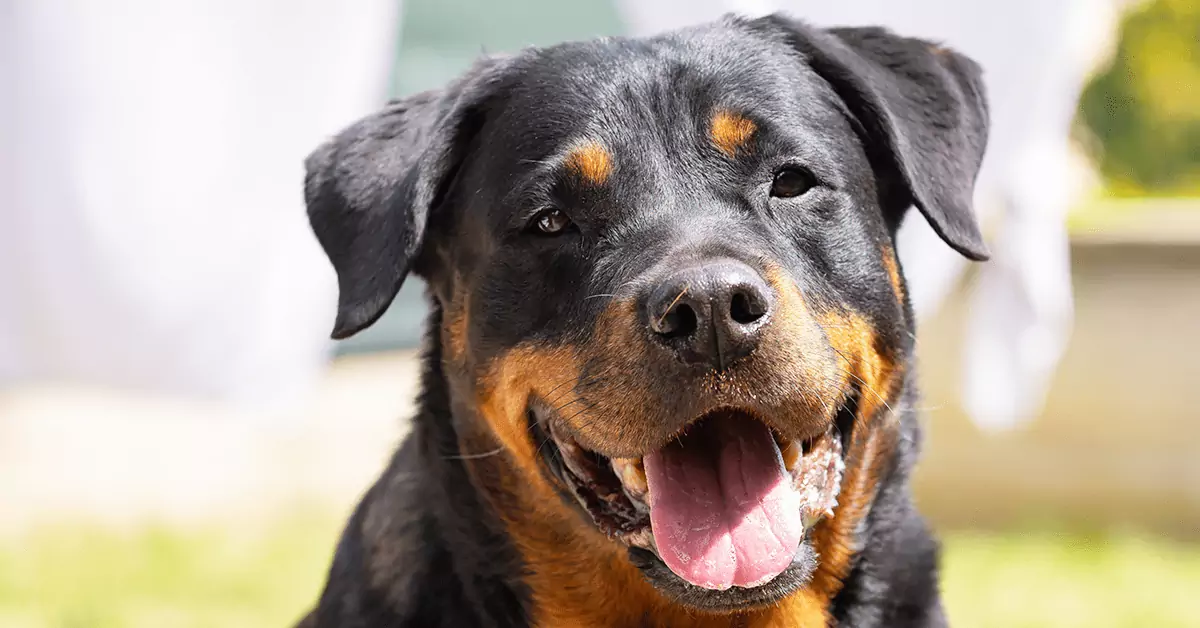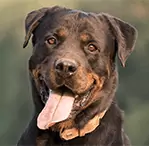
Meet the Rottweiler
Top Working Dog
Protective Pooch
Best Fur Friend
My Many Looks
My Breed Characteristics
Furbulous Fact
As I Grow Up
History of My Breed
Care Tips
Training Tips
Personality
Loyal
Hard-Working
Alert
Group
Working
Origin
Germany
Life Span
9-10 Years
Breed Popularity
#8 of 195
Height Range
22-27 inches
Weight Range
80-135 pounds
Coat Details
Type
Straight and Medium-Length
Texture
Coarse and Dense
Features
Double Coat
Colors
Black & Mahogany, Black & Rust, Black & Tan
Hypoallergenic
Cost to Buy
$600-$2,000
Lifetime Care Cost
$21,670
My Many Looks
My Breed Characteristics
Furbulous Fact
As I Grow Up



History of My Breed
Care Tips
from Dr. Jessica Greenberg, Associate VeterinarianWork with a behaviorist if you notice aggression in your pup.
ehavior modification and obedience training are extra important with Rottweilers, who have a tendency to be naturally aggressive. Observe your pup’s behavior and make sure you take the appropriate steps to raise them into good dog citizens.
Watch out for signs of inflammation.
Rottweiler puppies between six and 18 months of age are particularly prone to a condition called panosteitis, which is essentially a bad case of inflammation of their bones. If your pup displays signs of lameness, fever, or pain at your touch, it may be a good idea to see your vet and start a treatment plan.
Get key health screenings your vet recommends.
Beyond your first few puppy wellness visits, get your Rottie regular screenings to catch things like hip dysplasia, arthritis, heart issues, and other conditions that may crop up as they age. You won’t always be able to catch signs and symptoms on your own, so make sure you get your pup checked out by the vet on a regular basis throughout their lifetime.
Training Tips
from Dr. Jessica Greenberg, Associate VeterinarianCoach your Rottie pup out of their possessive tendencies.
Rotties can display possessive tendencies, unless you help coach them at an early age. Since toys are often sources of struggle, you can use them as a training tool. If a dog thinks of something as theirs, like a toy, they begin to feel ownership over it, and feel like they need to protect it. But, if you periodically take their toys away, your pup will understand that you own the toy – not them. As the toy owner, you lend it to the dog for behaving well. With enough practice, they’ll understand that the toy is a reward, not a trophy. - Richard Lovejoy, Professional Remote Dog Trainer
Socialize your pup early in their training.
It’s important for Rottie pups to acclimate to other dogs early on, as the socialization window starts to close at 16 weeks. It’s a good idea to expose your pup to different stimuli in their environment, including other puppies and other humans. Mixing fun treats is exercise for both mind and body! - Laura Monaco Torelli, Certified Dog Trainer
Coach your Rottie to be a great leash walker.
Rotts are a gregarious and friendly breed, but from time to time, people on the street still freeze up around them. Unless you train your dog to be a good canine citizen, they might bark as a communication strategy, which can be scary for passersby. Counter this early on by proactively coaching your Rottie to be a respectful leash walker. Take them on plenty of sniff walks, exploring environments, with lots of treats to reward their good behavior. - Laura Monaco Torelli, Certified Dog Trainer
My Many Looks
My Breed Characteristics
Furbulous Fact
As I Grow Up
History of My Breed
Care Tips
Training Tips
-
Personality
Loyal
Hard-Working
Alert
-
Group
Working
-
Origin
Germany
-
Life Span
9-10 Years
-
Breed Popularity
#8 of 195
-
Height Range
22-27 inches
-
Weight Range
80-135 pounds
-
动物皮毛
Type
Straight and Medium-Length
Texture
Coarse and Dense
Features
Double Coat
Colors
Black & Mahogany, Black & Rust, Black & Tan
-
Hypoallergenic
-
Cost to Buy
$600-$2,000
-
Lifetime Care Cost
$21,670


